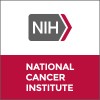
Tocilizumab for the Prevention of Graft Versus Host Disease After Cord Blood Transplantation
Acute Myeloid LeukemiaAcute Lymphoblastic Leukemia7 moreThe aim of the research in this study is to make participants' transplant safer by reducing the risk of developing GVHD and GVHD-related complications by giving participants a dose of the drug tocilizumab in addition to the standard approach for GVHD prevention. Tocilizumab reduces the risk of inflammation by blocking the effect of Interleukin-6, a protein that exists in high levels in the blood when there is inflammation. Participants who receive stem cell transplants have high levels of this protein in their blood early after transplant. Therefore, the goal of this study is to reduce the risk of inflammation after transplant with the addition of Tocilizumab. This could decrease the risk of developing GVHD and GVHD-associated complications.

High-Dose Post-Transplant Cyclophosphamide and Bortezomib (CyBor) for the Prevention of Graft-versus-Host...
GVHDThis is a single arm open label phase II clinical trial. Adult patients with hematological malignancies undergoing allogeneic HSCT from matched-related or unrelated donor are eligible for the study if they meet the standard criteria defined in the investigator's institutional standard operation procedures (SOPs), meet all inclusion criteria, and do not satisfy any exclusion criteria. Patients will receive reduced-intensity or myeloablative conditioning regimen of fludarabine, busulfan, and rabbit anti-thymocyte globulin (rATG). Patients will receive PTCyBor as GvHD prophylaxis.

A Phase II Study of Allo-HCT for B-Cell NHL Using Zevalin, Fludarabine and Melphalan
Graft Versus Host DiseaseLeukemia1 moreRATIONALE: Giving monoclonal antibody therapy, radioimmunotherapy, and chemotherapy before a donor stem cell transplant helps stop the growth of cancer cells and helps stop the patient's immune system from rejecting the donor's stem cells. When the stem cells from a related donor that do not exactly match the patient's blood, are infused into the patient, they may help the patient's bone marrow make stem cells, red blood cells, white blood cells, and platelets. Sometimes the transplanted cells from a donor can also make an immune response against the body's normal cells. Giving tacrolimus and sirolimus before and after transplant may stop this from happening. PURPOSE: This phase II trial is studying the side effects and how well giving indium In 111 ibritumomab tiuxetan and yttrium y 90 ibritumomab tiuxetan together with rituximab, fludarabine, melphalan, and donor stem cell transplant works in treating patients with B-cell non-Hodgkin lymphoma.

FMT In High-Risk Acute GVHD After ALLO HCT
Acute Graft-Versus-Host Disease (Gvhd) GradeHematopoietic Cell Transplantation1 moreThe purpose of this study is to evaluate the effectiveness of Fecal Microbiota Transplant (FMT) treatment in high-risk acute graft-versus-host disease (GVHD). This research study involves an experimental intervention called FMT.

A Study of TQ05105 in Patients With Chronic Graft Versus Host Disease
Chronic Graft Versus Host DiseaseThis study was a single arm, open label, multicenter phase Ib / II trial in subjects with glucocorticoid refractory / dependent moderate to severe cGVHD.The trial consisted of two phases: phase I for the dose exploration and phase II for the extension study.

Post-transplantation Cyclophosphamide in Haploidentical Stem Cell Allografts Dose Reduction: 50...
Graft Vs Host DiseaseAllogeneic hematopoietic cell transplantation (HSCT) is a worldwide recognized therapy for several hematologic malignancies; a modality extensively used around the world due to its effectivity; however, an HLA-matched sibling or unrelated donor is not always available, because of diverse factors such as: ethnic minorities and multiethnic families, socio-economic status, among others. This problem has led to an expansion of the donor pool to include alternative donor sources such as HLA-haploidentical (Haplo) relatives, HLA-mismatched unrelated donors, and HLA-matched or mismatched cord blood. In the Hematology and Internal Medicine Center of Clinica Ruiz, we have seen that 50% reduced doses of post-transplantation cyclophosphamide (25 mg/Kg) on days +3 and +4 have a favorable effect on patient's survival rates compared to the full 50 mg/Kg doses. Haplo-HSCT can be conducted safely on an outpatient basis, using peripheral blood stem cells, this leading into substantial decreases in the costs. Outpatient-based Haplo-HSCT has turned into the solution of the HSCT most frequent problems in low- and middle-income countries (LMIC): Cost and donor availability. The high dose administration of PT-Cy after transplant can lead into hematological and cardiac, toxicities. There is preliminary information about diminished doses of PTCy, might being equally effective in the prevention of GVHD and substantially less toxic.

Study of Baricitinib, a JAK1/2 Inhibitor, in Chronic Graft-Versus-Host Disease After Allogeneic...
Chronic Graft vs Host DiseaseChronic Graft-Versus-Host DiseaseBackground: Chronic graft versus host disease (cGVHD) can affect people who had a hematopoietic stem cell transplant using donor cells. It is often fatal. It is usually treated with high doses of steroids. But that helps only about half the people in the long term. Researchers want to see if a drug called baricitinib can help people with cGVHD that has not responded to therapy. The drug inhibits the proteins involved in communication in the immune system. These proteins may play a role in cGVHD and other inflammatory diseases. Objectives: To test the safety and effectiveness of baricitinib in people with cGVHD that has not responded to therapy. Eligibility: Adults 18 and older with cGVHD that has not responded to therapy. Design: Participants will be screened with a medical history, physical exam, and blood and urine tests. They will have lung and heart tests and chest scans. Baseline visit: Participants will have: Medical history Physical exam Blood tests Tests for infectious diseases Skin, eye, and teeth evaluations Rehabilitation and occupational medicine evaluations Photos of any lesions Gynecology evaluation (females) The study will occur in 28-day cycles. Participants will take the study drug by mouth every day for 3 cycles. Some will take it for 3 or 6 more cycles. Participants will have a few visits during each cycle. They will repeat some previous tests. They may also have scans and questionnaires. Participants will have a visit when they stop taking the drug and another 3 months later. They will repeat a few study tests. They will have follow-up calls for 2 years.

A Phase II Trial of Low-Dose Interleukin-2 (IL-2) Added to Extra-Corporeal Photopheresis for Steroid-Refractory...
Chronic Graft-versus-host-diseaseThis research study is evaluating a combination of a therapy called Extra-corporeal Photopheresis (ECP) with a drug called Interleukin-2 (IL-2) as a possible treatment for chronic graft-versus-host-disease (GVHD) following allogeneic stem cell transplant.

A Phase I Study of Abatacept in the Treatment of Patients With Steroid Refractory Chronic Graft...
Chronic Graft Versus Host DiseaseThe participant is invited to take part in this study because they have chronic Graft versus Host Disease (cGVHD) that is not responding to standard treatment with steroids. This research study is a way of gaining new knowledge about the treatment of patients with cGVHD. This research study is evaluating a drug called abatacept. Abatacept is a drug that alters and suppresses the immune system. Abatacept is approved by the Food and Drug Administration (FDA) for the treatment of moderate to severe active rheumatoid arthritis in adults and of severe juvenile idiopathic arthritis (JIA) in patients who have failed prior therapy with disease-modifying anti-rheumatic drugs (DMARDs). These are autoimmune conditions, ie caused by an overactive immune system that attacks normal tissues and organs. It is currently being tested in a variety of other autoimmune conditions. In this case it is considered experimental. cGVHD is caused by the donor cells attacking various organs of the recipient. The investigators try to minimize this immune attack by using corticosteroids such as prednisone. In severe cases prednisone is not sufficient and other immunosuppressive medications are used in addition in order to more efficiently control cGVHD and to limit the dose and consequently the multiple side-effects of corticosteroids. This study is being done to determine if the use of abatacept is safe in patients with cGVHD and if it can facilitate a better control of cGVHD. During this study the participants will be evaluated for side effects from the treatment with abatacept, and for response of the cGVHD to the treatment. There will be two groups of participants in the study. The first group will be treated at a relatively low dose of abatacept. If this is found to be safe then the second group will be treated at a higher dose. Three to four tablespoons of blood will be drawn at every 2 week visit in order to determine your blood counts, kidney and liver function. Some of the blood will be used in a research lab in order to study measures of your immune system and how they might be affected by the treatment.

Phase 1/2 Dose Finding and Safety Study of Ibrutinib in Pediatric Subjects With Chronic Graft Versus...
Chronic Graft Versus Host DiseaseDose Finding and Safety Study of Ibrutinib in Pediatric Subjects with Chronic Graft Versus Host Disease (cGVHD)
